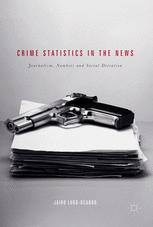

Most ebook files are in PDF format, so you can easily read them using various software such as Foxit Reader or directly on the Google Chrome browser.
Some ebook files are released by publishers in other formats such as .awz, .mobi, .epub, .fb2, etc. You may need to install specific software to read these formats on mobile/PC, such as Calibre.
Please read the tutorial at this link: https://ebookbell.com/faq
We offer FREE conversion to the popular formats you request; however, this may take some time. Therefore, right after payment, please email us, and we will try to provide the service as quickly as possible.
For some exceptional file formats or broken links (if any), please refrain from opening any disputes. Instead, email us first, and we will try to assist within a maximum of 6 hours.
EbookBell Team

0.0
0 reviewsThis book offers a comparative exploration of how journalists across different newsrooms around the world access and interpret statistics when producing stories related to crime. Looking at the nature of news sources regularly used by journalists, Lugo-Ocando analyses how these numbers are used to report crime.
As the author argues, far from being straightforward, the relationship between numbers and journalists in the context of crime reporting is complex, and at times, problematic. Because the reporting of crime statistics impacts upon policymaking, we need to better understand how these statistics are used and reported in order to improve the process of decision.
Finally, Lugo-Ocando maintains that the only way to create a fairer justice system and a better-informed general public is by improving the way crime is covered in the news. A compelling and informed text, this book will be of interest to scholars and students of criminology and journalism alike.